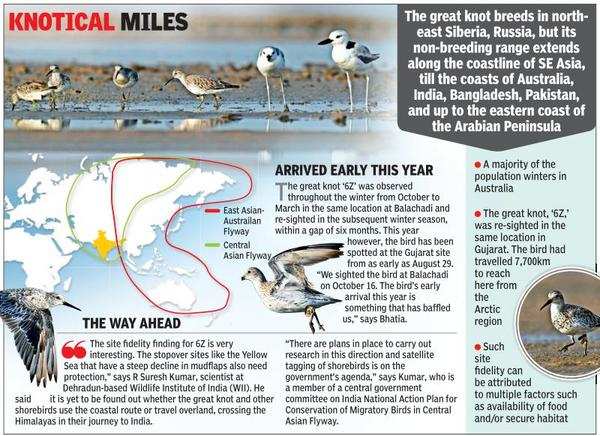
A great knot from Russia that is part of the endangered Calidris tenuirostris (Horsfield, 1821) family has flown over 9,000 kilometres to Kerala’s coast, solving yet another mystery of avian migration.
Key Highlights
- Only one of the two is known to have been observed in India. The other has been seen in Gujarat’s Jamnagar.
- MOSKVA rings were used to identify thousands of huge knots on the Kamchatka peninsula in eastern Russia.
- It arrived with a flock of 14 great knots, around 150 migratory waders, including about a hundred seagulls, a rare straggler Caspian plover, whimbrels, sanderlings, and lesser sand plovers.

About
- It is the largest Calidris species and a tiny wader.
- The IUCN has classed it as a “endangered” species.
- The Convention on the Conservation of Migratory Species of Wild Animals lists it in Appendix I.
- Marine Coastal/Supratidal, Marine Neritic, Marine Intertidal, and Grassland habitats.
- This species breeds in northeast Siberia, Russia, and spends its winters primarily in Australia. It also occurs throughout South-East Asia’s coasts, including those of India, Bangladesh, Pakistan, and the eastern Arabian Peninsula.
Threats
- Shorebird population losses in the Yellow Sea region are assumed to be largely attributed to the loss of intertidal stopover habitats.
- Climate change may also pose a threat to it.
- Reclamation of non-breeding stopping grounds has produced a very rapid population drop, according to recent findings, and it is predicted that more proposed reclamation operations would result in significant declines in the future.
